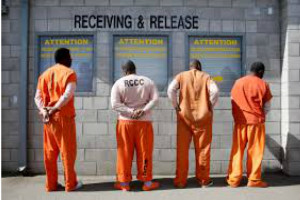View the entire newsletter for more articles: 2015 - NJAC County Biz - November
by Christopher Bell, Vice President of Business Development, Community Corrections for Corizon Health
 Thanks to presidential politics, prison inmate reentry in New Jersey recently received front-page media attention after Governor Chris Christie took issue with President Obama’s visit to Newark to promote federal rehabilitation programs for those re-entering society.
Thanks to presidential politics, prison inmate reentry in New Jersey recently received front-page media attention after Governor Chris Christie took issue with President Obama’s visit to Newark to promote federal rehabilitation programs for those re-entering society.
Politics aside, effective reentry of jail inmates back into their communities is a crucial component to reducing the long-term societal and budgetary costs to counties from so-called frequent flyers. These are people for whom the sally port at the jail resembles a revolving door as they are released only to reoffend, usually due to untreated mental health and/or substance abuse issues.
Now is a good time for counties to consider establishing or enhancing their reentry efforts. Recently announced federal reentry grants, changes to HUD-assisted housing rules, and other proposals related to federal sentencing reform, may provide critical resources to local governments. Additionally, existing U.S. Justice Department grants and other sources have funded reentry programs in communities throughout the United States.
As the nation’s largest provider of correctional healthcare, Corizon Health has been at the forefront of providing re-entry programs at county jails and state prisons. The company has seen first-hand how a relatively small upfront investment may yield dividends to communities in the long-run as cycles of addiction are broken, mental health needs are addressed and families are kept intact.
Ideally, the reentry process begins on the first day of incarceration through stabilizing and managing mental health issues, substance abuse and other counseling, and addressing chronic disease and other underlying health issues. For those inmates in need of long-term prescription drugs, important consideration must be made not only of which medication has the best efficacy but which will be affordable and readily available once he or she leaves jail.
In addition to the medical program behind the walls, counties seeking to reduce recidivism should start by building partnerships and open communications between the jails and the communities they serve. Discharge planners in the jail work to link offenders with community-based services, ideally creating a “warm handoff” to one or more programs offering resources such as housing, food, healthcare, and counseling. This relatively low-cost first step can mean the difference between realizing resolutions made behind bars and returning to homelessness, street drugs, and property crime.
Other re-entry strategies that Corizon Health is experiencing success include assisting with federal SSI applications for those whose mental illnesses or other health issues may qualify them for disability support, helping inmates enroll in health insurance through the Affordable Care Act, and customized reentry websites offering information from a variety of community resources like food banks, employment services, and housing assistance. (See www.corizonreentry.com for an example.)
Does it work? The Discharge Planning Program in Alameda County, California, which takes a case management approach through integrating the criminal justice and social services systems, experienced almost a 50 percent decrease in the number of offenders returning to jail in the first six months of 2014 compared to the first six months of 2013, and less time spent in jail for those who did return.
